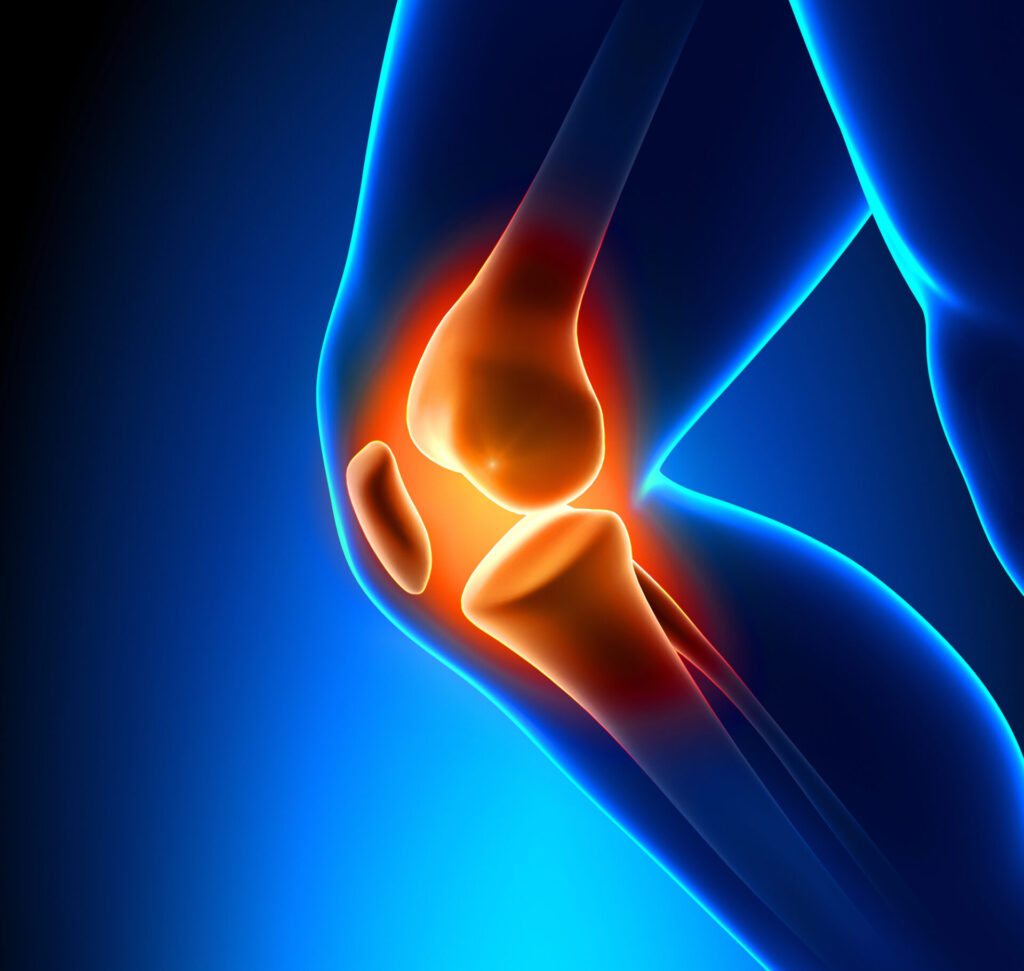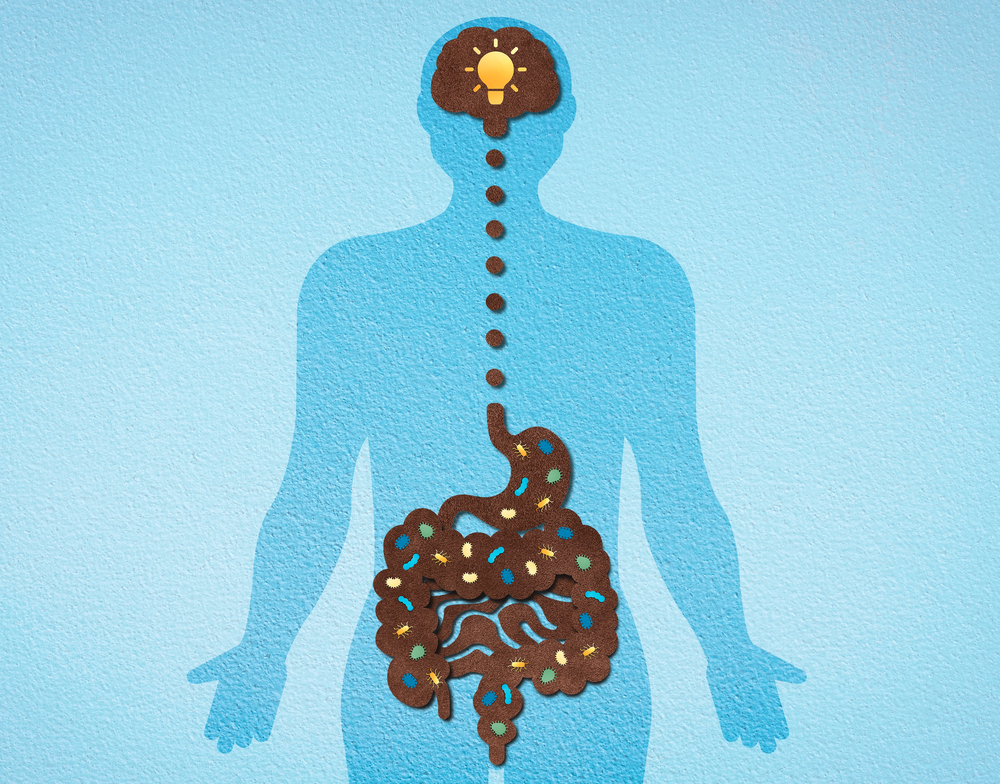In terms of gut health, there’s no one-and-done approach. Far from a static mechanism, the microbiome (check out the Microbiome Resource Center) evolves throughout the lifespan, with often-profound shifts in composition and stability. Research highlights specific patterns and transition points at various ages and stages of life, as well as significant impacts those changes have on long-term wellness—so a personalized gut-health protocol that considers evolving needs is crucial. Five primary ages and stages, with physiological, environmental and other factors that influence microbiome balance:
Infancy: Birth to Age 2.
The human microbiome undergoes most of its development very early in life, with major changes continuing until about the age of three. Microbial colonization of the gut begins at birth, or possibly even before: while it was originally believed the neonate was sterile, some research hints at colonization before delivery. In either case, development and stabilization of the infant’s microbiome [More: INFANT MICROBIOME] depends on several critical factors.1, 2, 3
Mode of delivery has a profound impact on the gut microbiome. Vaginal delivery exposes the newborn to a greater composition of Lactobacilli and other advantageous bacteria. In infants delivered via Caesarian, the microbiome is less stable, with delayed Bifidobacterium emergence and an abundance of pathogenic organisms, including species linked with higher rates of respiratory infections. And some studies suggest babies delivered by C-section have more respiratory infections, and increased antibiotic use, in the first year of life.4, 5, 6, 7
Diet strongly influences the microbiome’s composition and diversity. Breastfed babies appear to have more beneficial intestinal bacteria, with higher levels of Bifidobacterium and less Clostridium difficile, Bacteroides and Escherichia coli than formula-fed infants. Other research suggests the microbiomes of formula-fed babies have greater numbers of organisms associated with inflammation. Weaning and the introduction of solid food trigger marked changes in microbial makeup, with potential impacts on immune system development. Antibiotic use also disrupts the composition and metabolic activity of gut microbiota, possibly affecting growth trajectories and increasing the risk of obesity, asthma, allergies and other problems.8, 9, 10, 11, 12
Early-life dysbiosis may also impair neurodevelopment, cognitive performance and behavior. Human studies demonstrate associations between gut microbiota composition and temperament in infants, suggesting dysbiosis may foster traits that precede depression or anxiety. In other studies, alpha diversity at age one was linked with lower early learning scores, visual reception and expressive language scales at age two.13, 14, 15
Childhood: Ages 3 to 12.
By the age of three, the infant’s microbiome begins to resemble adult patterns, becoming increasingly stable and diverse. While it’s more resilient and tends to return to its baseline composition following minor disturbances, the child’s microbiome is still extremely vulnerable to dietary and environmental influences.16, 17
Diet is critical in shaping the diversity and balance of the microbiome. Fiber intake, especially from fruits, vegetables and whole grains, is associated with microbial diversity, an abundance of Bifidobacteria and Lactobacilli, and higher levels of SCFAs in children. Environmental influences, [More: ENVIRONMENTAL FACTORS] like exposure to different ecosystems, having pets or siblings, household cleaners and personal hygiene practices, factor in. Antibacterial soaps negatively affect the microbiome, and one study suggests a link between early-life exposure to disinfectants, disruptions in gut bacteria and greater likelihood of childhood obesity. And antibiotic treatment in childhood, as in infancy, can cause significant alterations in the microbiome, impacting immunity and potentially increasing the risk of asthma, obesity and chronic disease.18, 19, 20, 21, 22
Childhood dysbiosis also plays a powerful role in neuropsychiatric disorders. Development of autism spectrum disorder (ASD) is connected to the microbiome, and research demonstrates marked differences in the microbiomes of children with autism, [More: AUTISM + GUT BACTERIA] including higher levels of Bacteroidetes and Clostridial species. In human studies examining the gut-brain connection in ASD, children with autism who received fecal transplantation showed measurable improvements in social skills and adaptive behaviors.23, 24
Adolescents and Teens: Ages 13 to 19.
During adolescence, the microbiome undergoes notable shifts in patterns and composition, more closely mirroring an adult’s. Even as it becomes increasingly stable and developed, the intense physiological and environmental changes that characterize adolescence greatly influence the makeup and diversity of the microbiome.
Hormonal fluctuations profoundly affect the microbiome. Heightened production of sex hormones, especially estrogen and progesterone in girls and testosterone in boys, impact gut motility, mucus production and bacterial composition and activity. Conversely, the microbiome affects hormone metabolism and regulation.25, 26
Significant emotional and psychological changes in adolescence influence the gut-brain axis, in a complex bidirectional relationship. Stress and mood disorders like anxiety and depression impact the gut environment and microbial makeup, and alterations in the microbiome interfere with the production and metabolism of neurotransmitters and neuroactive substances that regulate mood and emotional well-being. Other stressors common during the teen years—sleep patterns, poor quality diet, alcohol and drug use—have also been shown to impair gut motility and permeability and disrupt microbial diversity and balance.27, 28, 29
And as adolescents and teens become more independent, nutrition is increasingly important. Excessive consumption of processed and fast foods foods—low in fiber, high in sugar and fat, rich in animal protein—is linked with decreased microbial diversity and increased abundance of pathogenic bacteria. Sugar and high-glycemic carbs promote the growth of harmful organisms, reducing levels of favorable bacteria and creating imbalances associated with inflammation, metabolic disturbances, and a heightened risk of conditions like obesity and type 2 diabetes.30, 31
Adulthood: Ages 20 to 64.
With the onset of adulthood, the core microbial community becomes more established, and the microbiome stabilizes, quickly adapting to transient disturbances—though it remains dynamic and exposed to the effects of dietary changes and lifestyle factors.
Diet continues to play a crucial role. Poor-quality nutrition in adulthood is linked with decreased diversity and increased gut leakiness, systemic inflammation, metabolic syndrome and the onset of chronic disease. Restrictive diets that eliminate food groups lead to macronutrient shortfalls, influencing microbial balance: low-fiber consumption and the resulting reductions in SCFA production may impact immunity, excessive protein intake, especially animal protein, disrupts the microbiome and contributes to an inflammatory environment in the gut. Diets high in saturated fat promote pathogenic organisms and hamper beneficial bacteria, and calorie-restrictive diets negatively affect microbiota richness and diversity.32, 33, 34
Oral contraceptives may subtly alter the microbiome, decreasing diversity and encouraging the abundance of detrimental organisms. Pregnancy involves a range of hormonal, immunological and metabolic shifts that affect the composition and function of the microbiome, as do common adult lifestyle considerations. Stress is linked with dysfunctional microbial makeup, impaired neurotransmitter signaling, decreased immune response and chronic inflammation. Sleep deprivation can alter microbial composition in as little as 48 hours, while bacterial composition likewise interferes with sleep quality and duration. Meanwhile, all these elements exist in a complex, interconnected relationship, forming feedback loops: stress disrupts sleep, sleep and stress promote poor dietary choices, dietary factors impact the microbiome, which influences mood and stress, and on and on.35, 36, 37, 38, 39
Seniors Years: 65 and Older.
As in early childhood, older age is marked by another period of significant shifts in the microbiome. The aging process has physiological effects on its composition and function, including declines in microbial diversity, decreases in Bifidobacteria and Lactobacilli and often an increase in potentially harmful organisms. Metabolic activity often slows, resulting in dampened production of SCFAs and other important metabolites. Alterations in immune interactions are common. And some evidence links the aging microbiome with ongoing, low-grade inflammation—called “inflammaging”—known to contribute to age-related health conditions and chronic disease.40, 41, 42
Dietary changes impact the microbiome, as do other lifestyle and environmental factors. A lack of physical activity and regular exercise can decrease bacterial diversity and resilience, hamper the production of SCFAs and indirectly promote inflammation. In older adults, sleep disturbances are associated with an increase in pro-inflammatory bacteria, while better sleep quality fosters the growth of beneficial organisms. A variety of medications, like proton pump inhibitors, SSRIs, corticosteroids, NSAIDs and other drugs, have also been shown to disrupt the microbiota.43, 44, 45, 46
And microbiome wellness is especially vital in older age. The gut microbiome is the root of many age-related changes and chronic diseases, including obesity, depression, metabolic disorders, heart disease and cancer, and new research links specific microbial composition with healthy aging and increased longevity.47, 48
References:
- Mancabelli L et al. Meta-analysis of the human gut microbiome from urbanized and pre-agricultural populations. Environ Microbiol. 2017;19:1379–1390
- Stewart CJ et al. Temporal development of the gut microbiome in early childhood from the teddy study. Nature. 2018; 562, 583–588.
- Odamaki T et al. Age-related changes in gut microbiota composition from newborn to centenarian: a cross-sectional study. BMC Microbiol. 2016;16:90.
- Thursby E, Juge N. Introduction to the human gut microbiota. Biochem J. 2017;474:1823–1836.
- Dominguez-Bello MG et al. Delivery mode shapes the acquisition and structure of the initial microbiota across multiple body habitats in newborns. Proc Natl Acad Sci U S A. 2010;107(26):11971–11975.
- Ronan V et al. Childhood Development and the Microbiome-The Intestinal Microbiota in Maintenance of Health and Development of Disease During Childhood Development. Gastroenterology. 2021 Jan;160(2):495-506.
- Reyman M et al. Author Correction: Impact of delivery mode-associated gut microbiota dynamics on health in the first year of life. Nat Commun. 2019;10(1).
- Bäckhed F et al. Dynamics and Stabilization of the Human Gut Microbiome during the First Year of Life. Cell Host Microbe. 2015;17(6):852.
- Ihekweazu FD, Versalovic J. Development of the Pediatric Gut Microbiome: Impact on Health and Disease. Am J Med Sci. 2018;356(5):413–423.
- Scott FI et al. Administration of Antibiotics to Children Before Age 2 Years Increases Risk for Childhood Obesity. Gastroenterology. 2016. July; 151(1):120–129.e5.
- Cho I et al. Antibiotics in early life alter the murine colonic microbiome and adiposity. Nature. 2012;488(7413):621–626.
- Bokulich NA et al. Antibiotics, birth mode, and diet shape microbiome maturation during early life. Sci Transl Med. 2016;8(343):343ra82.
- Bisgaard H et al. Reduced diversity of the intestinal microbiota during infancy is associated with increased risk of allergic disease at school age. J Allergy Clin Immunol. 2011; 128(646–652), e641-645.
- Aatsinki AK et al. Gut microbiota composition is associated with temperament traits in infants. Brain Behav Immun. 2019;80:849–858.
- Carlson AL et al. Infant Gut Microbiome Associated With Cognitive Development. Biol Psychiatry. 2018;83(2):148–159.
- Roswall J et al. Developmental trajectory of the healthy human gut microbiota during the first 5 years of life. Cell Host Microbe. 2021; 29, 765-776.e763.
- Wernroth ML et al. Development of gut microbiota during the first 2 years of life. Sci Rep. 2022; 12, 9080.
- Herman DR, Rhoades N, Mercado J, Argueta P, Lopez U, Flores GE. Dietary Habits of 2- to 9-Year-Old American Children Are Associated with Gut Microbiome Composition. J Acad Nutr Diet. 2020 Apr;120(4):517-534.
- Differding MK, Mueller NT. Are household disinfectants microbially mediated obesogens? CMAJ. 2018 Sep 17;190(37):E1095-E1096.
- Tun MH et al. Postnatal exposure to household disinfectants, infant gut microbiota and subsequent risk of overweight in children. CMAJ. 2018 Sep 17;190(37):E1097-E1107.
- Jakobsson HE et al. Short-term antibiotic treatment has differing long-term impacts on the human throat and gut microbiome. PLoS ONE. 2010; 5(3), e9836.
- Blaser MJ. Antibiotic use and its consequences for the normal microbiome. Science. 2016;352:544–545.
- Prehn-Kristensen A et al. Reduced microbiome alpha diversity in young patients with ADHD. PLoS One. 2018;13(7):e0200728..
- Kang DW et al. Microbiota Transfer Therapy alters gut ecosystem and improves gastrointestinal and autism symptoms: an open-label study. Microbiome. 2017;5(1):10.
- Agans R et al. Distal gut microbiota of adolescent children is different from that of adults. FEMS Microbiol Ecol. 2011;77(2):404–412.
- Calcaterra V et al. Precocious puberty and microbiota: The role of the sex hormone-gut microbiome axis. Front Endocrinol (Lausanne). 2022 Oct 21;13:1000919.
- McVey Neufeld KA et al. Reframing the Teenage Wasteland: Adolescent Microbiota-Gut-Brain Axis. Can J Psychiatry. 2016 Apr;61(4):214-21.
- Freimer D et al. The gut microbiota, HPA axis, and brain in adolescent-onset depression: Probiotics as a novel treatment. Brain Behav Immun Health. 2022 Oct 29;26:100541.
- Davenport ER et al. The human microbiome in evolution. BMC Biol. 2017;15:127.
- Sonnenburg ED et al. Diet-induced extinctions in the gut microbiota compound over generations. 2016;529:212–215
- Scheithauer TPM et al. Gut Microbiota as a Trigger for Metabolic Inflammation in Obesity and Type 2 Diabetes. Front Immunol. 2020 Oct 16;11:571731.
- Madison A, Kiecolt-Glaser JK. Stress, depression, diet, and the gut microbiota: human-bacteria interactions at the core of psychoneuroimmunology and nutrition. Curr Opin Behav Sci. 2019 Aug;28:105-110.
- Ma N et al. Contributions of the Interaction Between Dietary Protein and Gut Microbiota to Intestinal Health. Curr Protein Pept Sci. 2017;18(8):795-808.
- Wolters M et al. Dietary fat, the gut microbiota, and metabolic health – A systematic review conducted within the MyNewGut project. Clin Nutr. 2019 Dec;38(6):2504-2520.
- Mihajlovic J et al. Combined hormonal contraceptives are associated with minor changes in composition and diversity in gut microbiota of healthy women. Environ Microbiol. 2021 Jun;23(6):3037-3047.
- Koren O et al. The maternal gut microbiome in pregnancy: implications for the developing immune system. Nat Rev Gastroenterol Hepatol. 2024 Jan;21(1):35-45.
- Paudel D et al. Effect of psychological stress on the oral-gut microbiota and the potential oral-gut-brain axis. Jpn Dent Sci Rev. 2022 Nov;58:365-375.
- Benedict C et al. Gut microbiota and glucometabolic alterations in response to recurrent partial sleep deprivation in normal-weight young individuals. Mol Metab. 2016;5(12):1175–86.
- Yue M et al. Causal Effects of Gut Microbiota on Sleep-Related Phenotypes: A Two-Sample Mendelian Randomization Study. Clocks Sleep. 2023 Sep 12;5(3):566-580.
- Badal VD et al. The Gut Microbiome, Aging, and Longevity: A Systematic Review. Nutrients. 2020 Dec 7;12(12):3759.
- Santoro A et al. Microbiomes other than the gut: inflammaging and age-related diseases. Semin Immunopathol. 2020 Oct;42(5):589-605.
- Rock R, Turnbaugh P. Forging the microbiome to help us live long and prosper. PLOS Biology. 2023; 21(4), p. e3002087.
- Boytar AN et al. The Effect of Exercise Prescription on the Human Gut Microbiota and Comparison between Clinical and Apparently Healthy Populations: A Systematic Review. Nutrients. 2023 Mar 22;15(6):1534.
- Morwani-Mangnani J et al. Gut microbiome changes due to sleep disruption in older and younger individuals: a case for sarcopenia? Sleep. 2022 Dec 12;45(12):zsac239.
- Imhann F et al. The influence of proton pump inhibitors and other commonly used medication on the gut microbiota. Gut Microbes. 2017 Jul 4;8(4):351-358.
- Tetel MJ et al. Steroids, stress and the gut microbiome-brain axis. J Neuroendocrinol. 2018 Feb;30(2):10.1111/jne.12548.
- Wilmanski T et al. Gut microbiome pattern reflects healthy ageing and predicts survival in humans. Nat Metab. 2021 Feb;3(2):274-286.
- Bana B, Cabreiro F. The Microbiome and Aging. Annu Rev Genet. 2019;53:239–261.





